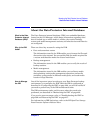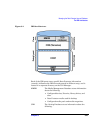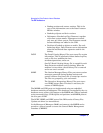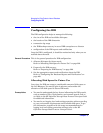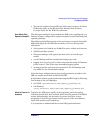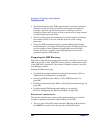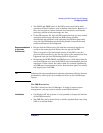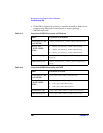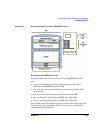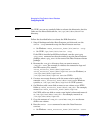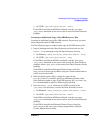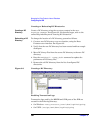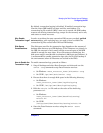
Managing the Data Protector Internal Database
Configuring the IDB
Chapter 9390
• The filenames part of the IDB is proportional to the total number of
filenames in the cell (but not the data volume and the number of
backups). Typically the filename growth is moderate, with the
exception of some mail servers or other systems with a large amount
of automatically generated files.
• The file versions part of the IDB grows with the number of backups,
the number of files in the cell, and the duration of the catalog
protection.
• Using the IDB transaction log files requires additional disk space.
Size prediction is not simple. Dominating factors influencing the size
are the number of new filenames being backed up and the total
backup activities (or weeks, if scheduled backups are the main
operation) between IDB backups.
Preparing for IDB Recovery
You need to make advance preparations in order to be able to recover the
IDB at any point in time. The IDB recovery restores information stored
in the IDB and is essential for the restore of backed up data in case the
Cell Manager crashes.
Prepare for IDB recovery by:
• Considering recommendations for optimizing robustness. Refer to
“Robustness Considerations” on page 390.
• Relocating IDB directories. Refer to “The IDB Directories” on
page 391.
• Enabling of transaction logs. Refer to “Enabling Transaction Logs” on
page 396.
• Configuring the IDB backup and backing it up regularly.
Refer to “Configuring the Database Backup” on page 398.
Robustness Considerations
This section outlines some aspects and recommendations you should
consider to optimize robustness and reliability of the IDB.
• The core part of the IDB, which contains CDB (objects & positions)
and MMDB, is essential for the operation of Data Protector.




